If you would like to come on one of my walks, a couple of places have just become free on two of my final walks until late next spring. Details and links are:
For this week’s post, I am in Whitechapel, on the Commercial Road, a short distance east from Aldgate East Underground Station, where, in 1952, my father took the following photo:
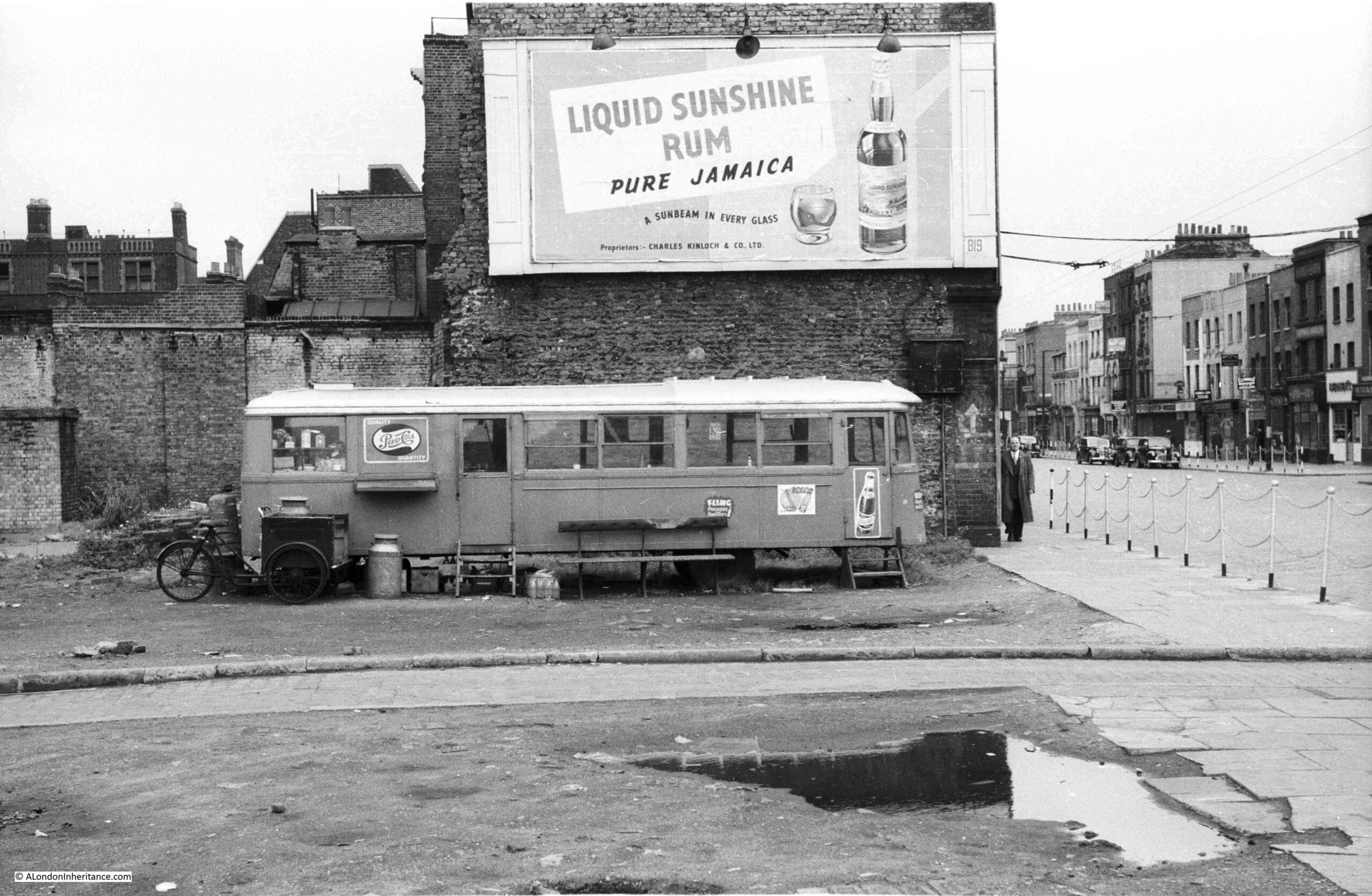
The view is looking east along Commercial Road. My father was standing in a cleared bomb site, looking across to where a café was parked. The café looks as if it was once a tram or coach, however after a quick bit of Googling, I could not find anything similar, so any information would be appreciated.
Roughly the same view today (although the street in the foreground is not the same in both photos, I had to stand slightly to the east to avoid trees, parked lorries and other obstructions on the pavement that obscured the view):
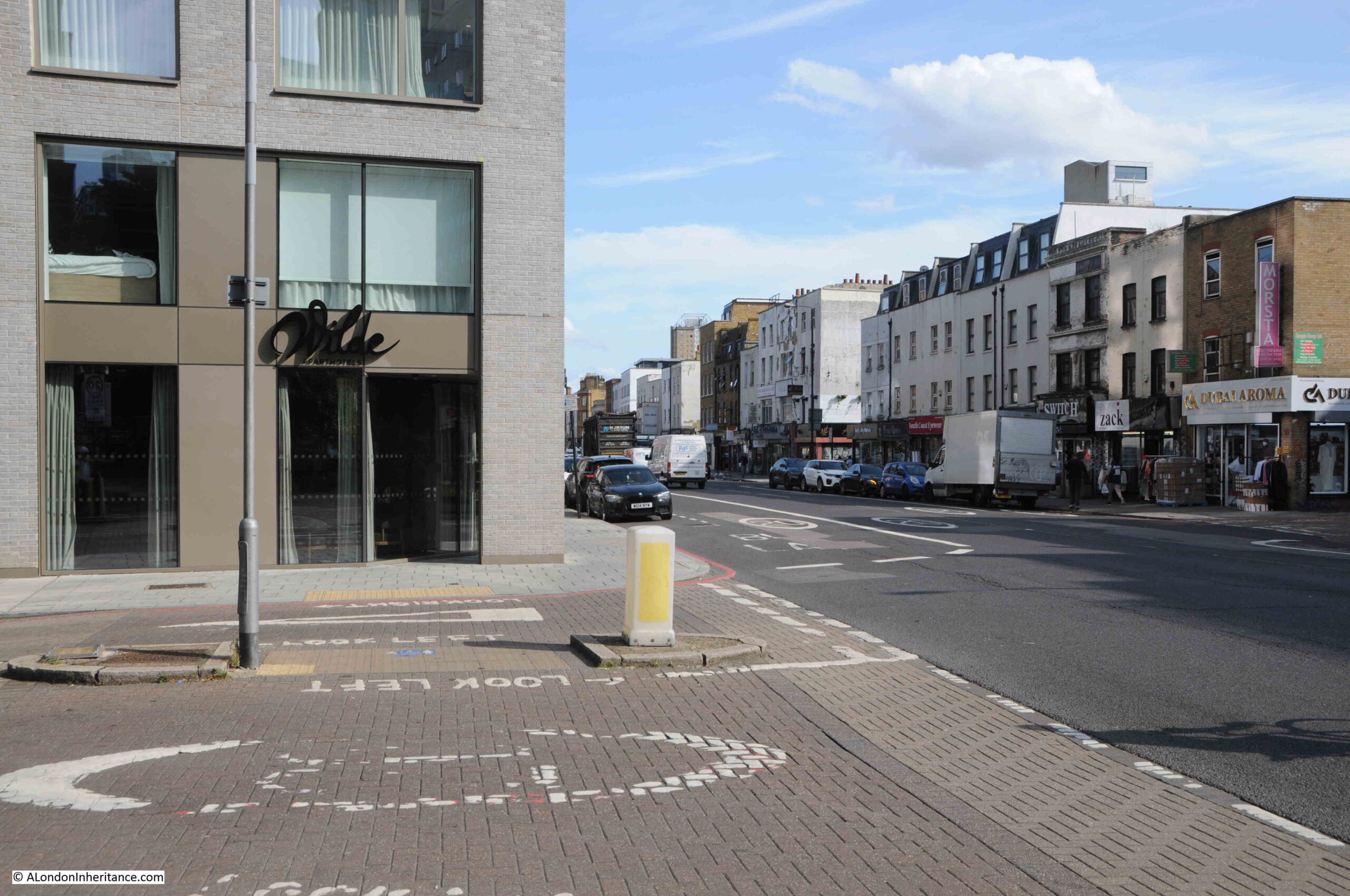
I have marked the location and direction of view by the red circle and arrow in the following extract from the 1948 revision of the OS map, with the blue line showing the location of the café (‘Reproduced with the permission of the National Library of Scotland“):
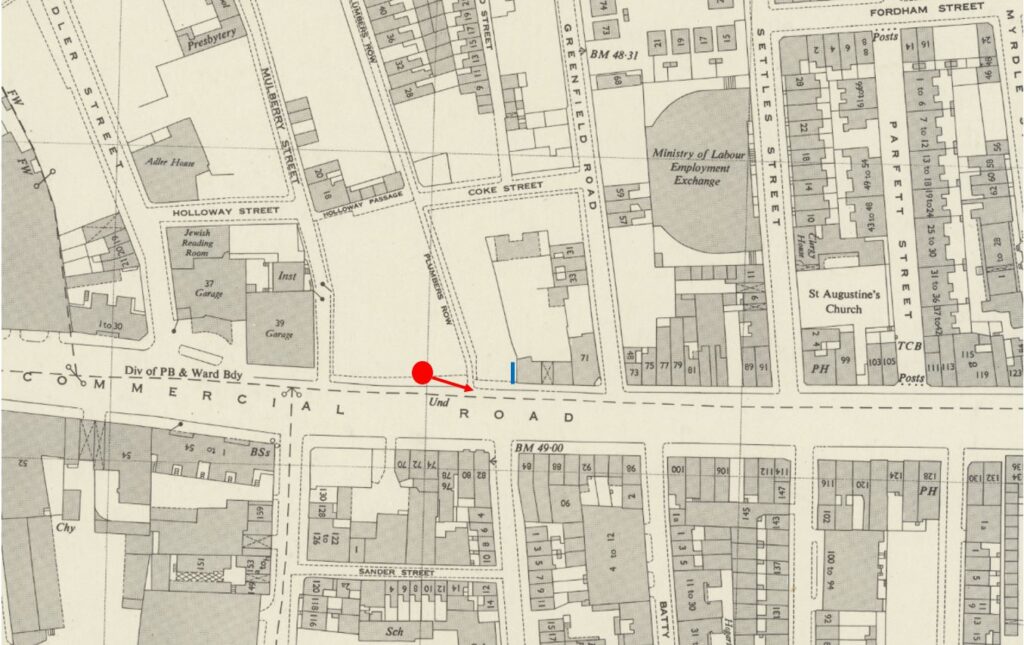
The map shows the amount of bomb damage in this part of Whitechapel with plenty of blank space where bomb damaged buildings had been cleared.
The map also shows the name of the narrow lane in the foreground of my father’s photo. This was Plumbers Row, a lane that went much further north from Commercial Road up to the junction of Fieldgate Street and Whitechapel Road, however today, the southern section has been built over, covering much of the area along Commercial Road with a large new building over the bombsite where my father was standing, where the café was located, and up to Greenfield Road.
Although nothing remains of the view to the left of Commercial Road in my father’s photo, much of the right hand side of the road is still recognisable. In the following extract from the 1952 photo, there is a row of terrace houses of difference sizes:
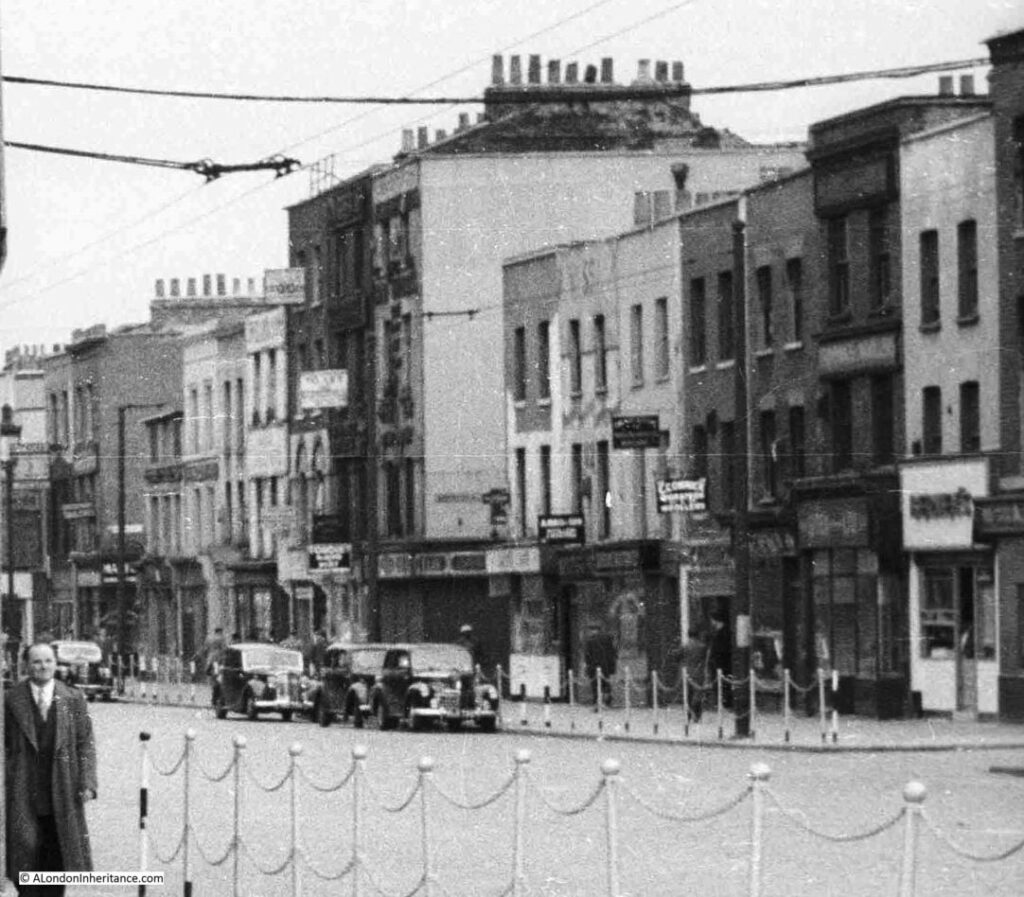
In the above photo, from the centre to the right, there is a row of terrace houses of the same height. These still remain today, although they have all had an additional floor added at roof level as shown in the same view, seventy one years later in 2023:
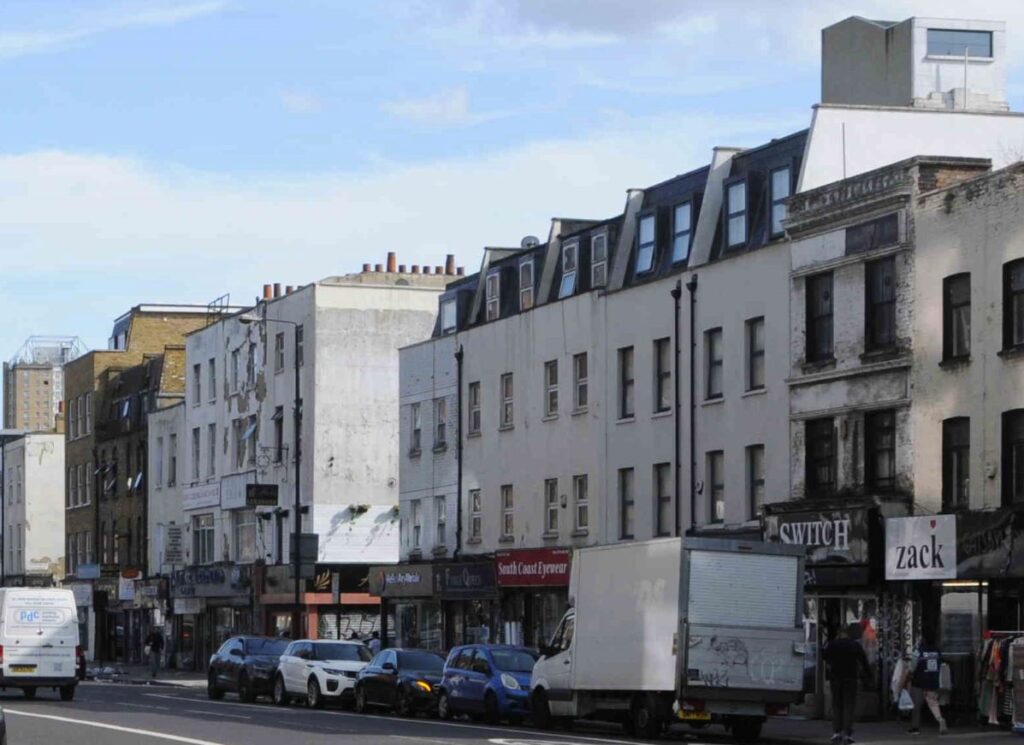
The building to the right of the terrace is still the same, as are the taller terrace buildings to the left.
The reason my father took this particular photo must have been the rather unusual café on the bomb site. On the front there are adverts for a number of soft drinks:
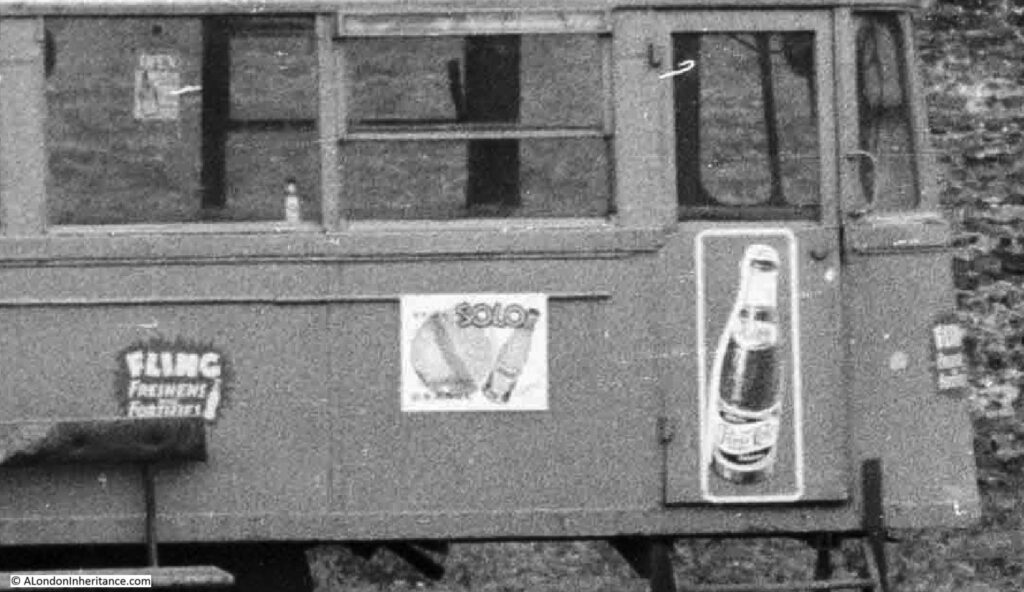
On the left is an advert for Fling with their slogan that it “Freshens and Fortifies”. It was sold in a bottle that was very similar to that used by Coke, and from what I have read it seems to have been a cheaper version of the American drink.
In the middle is an advert for Solo, an orange drink, highlighted by the illustration of a cut orange in the advert.
One the right is an advert for Pepsi Cola, which ten years later would rebrand as just Pepsi. There was also a large advert for Pepsi Cola on the left of the café, which seems to have had a small kitchen area at the rear:
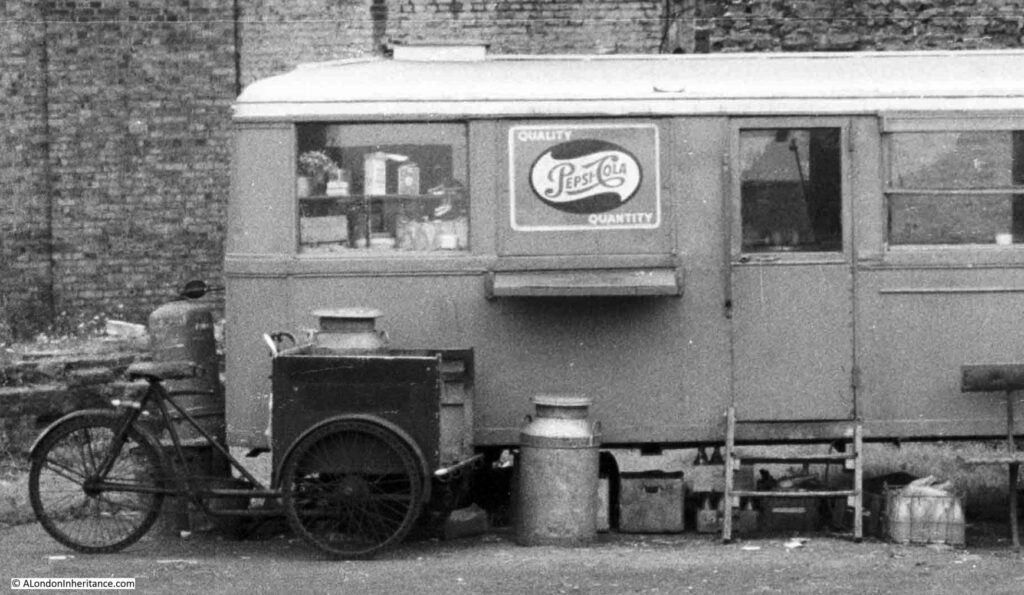
There are also a couple of milk churns, one of which is in a box which appears to be mounted at the front of a bike. No idea whether this was to bring milk to the café, or whether milk was distributed to local residents from the café.
The building behind the café had a large advert for Liquid Sunshine Rum – Pure Jamaica:
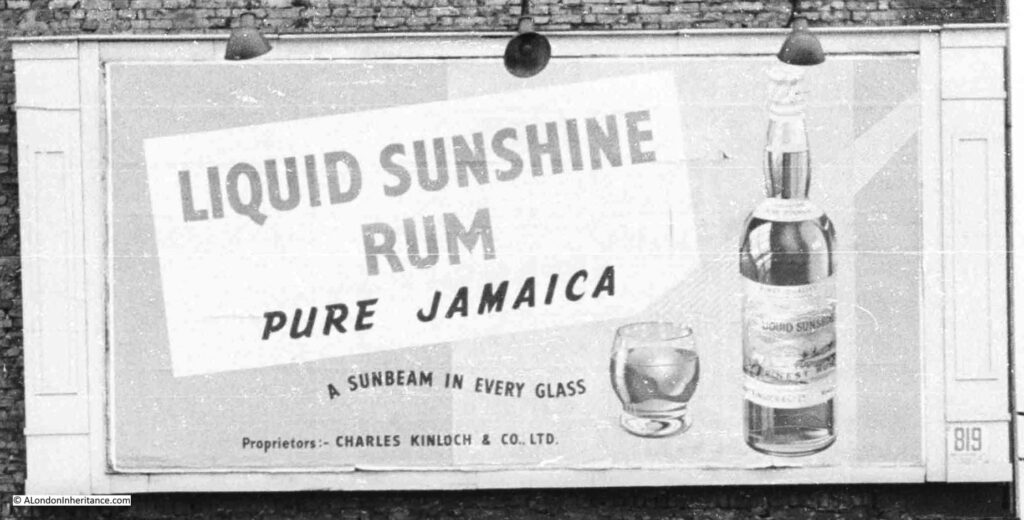
This was a brand of Charles Kinloch who were wine and spirits merchants, who seem to date from the early 1860s.
They were an independent company until 1957, five years after the above photo, when they were taken over by the brewer Courage.
I cannot find out for how long Liquid Sunshine Rum was sold, however their rum trade seems to have taken a back seat during the 1960s as wine started to become a popular alcoholic drink.
Charles Kinloch had plenty of adverts in the press and on TV targeting the low cost wine market, and they seem to have focused on lower cost Spanish wines, rather than more expensive French. Their marketing was on the pleasure of drinking their wines, rather than “putting by or putting one over the next door neighbour”.
In 1966 they advertised that “My Spanish wines are for drinkers, not collectors, says Charles Kinloch, They’re Good and Cheap”. Cheap was 9 shillings, 3 pence a bottle. In 1966 they also had an advertising slot on ITV titled “The Great Charles Kinloch Wine Robbery”, and in newspapers had full page adverts providing helpful lists of which of their wines to use for different types of food, and courses during a dinner.
At the time, their head office was in Kinloch House, Cumberland Avenue, London NW10. As Courage was taken over several times during the following decades, the Kinloch brand gradually disappeared.
And this is where research gets really frustrating as I found a Charles Kinloch building close to the site of the 1952 photo, the subject of this post.
Almost on the opposite side of the road, from the 1952 and my 2023 photo is Back Church Lane that runs from Commercial Road to Cable Street.
Along Back Church Lane was a large Charles Kinloch warehouse, and the building remains, along with the name Charles Kinloch in large letters along the top of the building.
It is frustrating as I found this during final research for the post on the Saturday prior to publication, so did not have time to go and take a photo, so to make up for the lack of a photo, you can see the building at this link to Google StreetView.
A relatively short post this week, but I am pleased to have found and photographed another of the locations of my father’s early photos.
